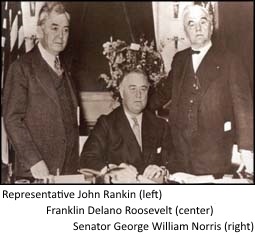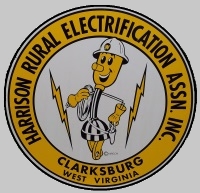The Rural Electrification Act
The Rural Electrification Act of 1935 provided federal loans for the installation of electrical distribution systems to serve rural areas of the United States.
The funding was channeled through cooperative electric power companies, most of which still exist today. These member-owned cooperatives purchased power on a wholesale basis and distributed it using their own network of transmission and distribution lines. The Rural Electrification Act was also an attempt made by FDR's New Deal to deal with the crippling amount of unemployment.
The funding was channeled through cooperative electric power companies, most of which still exist today. These member-owned cooperatives purchased power on a wholesale basis and distributed it using their own network of transmission and distribution lines. The Rural Electrification Act was also an attempt made by FDR's New Deal to deal with the crippling amount of unemployment.
History

At the time the Rural Electrification Act was passed, electricity was commonplace in cities but largely unavailable in farms, ranches, and other rural places. President Franklin Delano Roosevelt issued Executive Order 7037 on May 11, 1935, establishing the Rural Electrification Administration.[1] It was proposed by Representative John E. Rankin and Senator George William Norris. The act was signed into law by Roosevelt.
Technical issues
In the 1930s, the provision of power to remote areas was not thought to be economically feasible. A 2300 volt distribution system was then used in cities. This relatively low voltage could only be carried about 4 miles before the voltage drop became unacceptable. REA cooperatives used a 6900 volt distribution network, which could support much longer runs (up to about 40 miles). Despite requiring more expensive transformers at each home, the overall system cost was manageable.Wiring homes and farms
REA crews travelled through the American countryside, bringing teams of electricians along with them. The electricians added wiring to houses and barns to utilize the newly available power provided by the line crews. A standard REA installation in a house consisted of:A 60 amp, 230 volt fuse panel, with:
- A 60 amp range circuit
- A 20 amp kitchen circuit
- Two or three 15 amp lighting circuits
Later amendments
Some amendments to the Rural Electrification Act include:- 1944 - loan terms increased to 35 years, the act is made permanent
- 1949 - extended the act to allow loans to telephone companies wishing to extend their connections to unconnected rural areas
- December 8, 1993 - "North American Free Trade Agreement Implementation Act" - The "Buy American" provision to now include Mexico and Canada.




